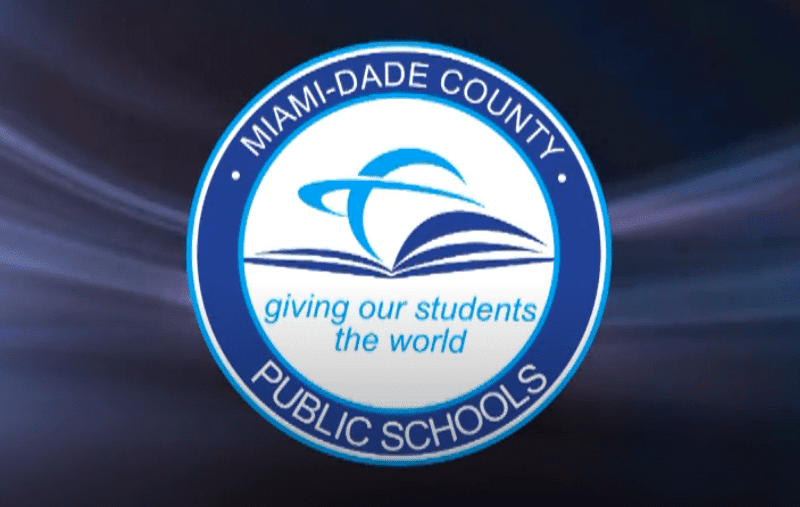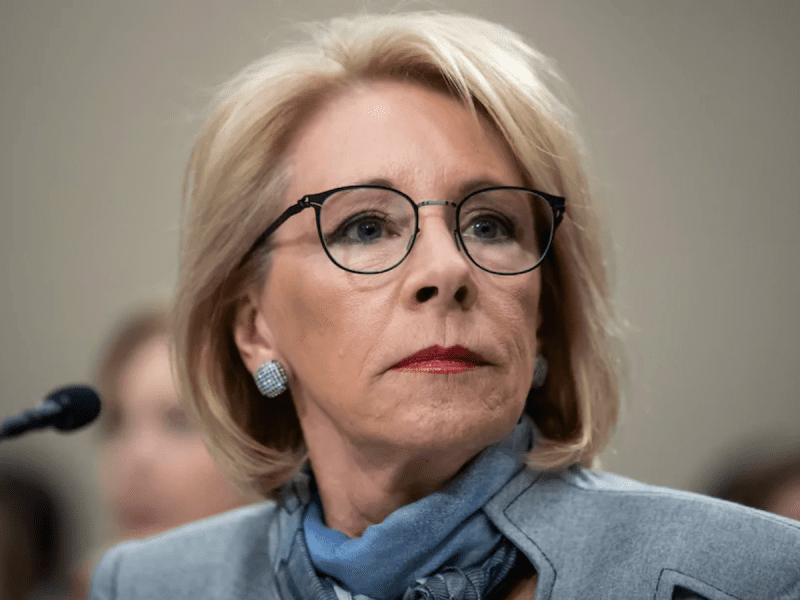Miami public schools return to online learning. What lessons were learned from spring?
Miami Herald | by Colleen Wright | August 10, 2020
Reopening Miami-Dade public schools began as a game of “ifs.”
If positive cases trend downward for 14 days. If testing for asymptomatic minors becomes widely available and expeditious. If at least 25% of a school’s student body opts to stay home, then the rest can go to the schoolhouse.
But as students, parents and teachers approach the first day of school — now Aug. 31 for Miami-Dade — there is finally more clarity on what school will look like. School will be remote and online until at least Oct. 5.
For at least a dozen districts around the state, including Miami-Dade, even the first day of school became another “if.” Start dates have been pushed back and some districts have conceded that virtual learning will take place for the first few weeks. Miami-Dade pushed its first day of school from Aug. 24 and then to Aug. 31 to allow enough time to acquaint everyone to the district’s new version of online learning.
In Miami-Dade, ground zero of the epicenter of the relentless coronavirus pandemic that continues to infect and kill Floridians, the lessons of an improvised spring quarter are the best guide to this coming year of online learning.
That’s because Miami-Dade County Public Schools’ plan hoped to reopen schools only if the county enters phase two. Then physical schooling can resume with mandatory masks and social distancing.
Superintendent Alberto Carvalho had hoped that was the reality.
“There’s a big gap between in-person teaching and learning and the second-best [online] alternative,” he said. But “I think we need to take into account the environmental conditions here locally.”
The United Teachers of Dade, representing 30,000 educators, had already called it: There will be no one physically in schools by the first day of school.
“The messaging we’ve been telling teachers and Miami-Dade County Public Schools staff and faculty [is] at this rate, we’re not going to reopen,” said UTD President Karla Hernandez-Mats. “We’re going to be 100% virtual. That’s what they have to get ready for.”
About four dozen rank-and-file educators drove in a caravan to the school district’s headquarters on a drenched morning demanding a commitment to virtual learning — and quick. They were spurred to action by a survey on teaching preferences that some say was vague and left teachers unsure of how to mark their answers without fear of losing their job.
“Maybe school is open, maybe it isn’t, but you haven’t prepared us,” said Ernest Graham Elementary third-grade teacher Sonia McPhee, who also said she’s stocking up on bleach and wipes because there aren’t enough custodians at her school. “We need to be planning both ways.”
‘THE VERY BEST WE COULD DO’
The online learning on the horizon will be vastly different than what it was this past spring. The district went online the Monday after schools closed March 13, with laptops and internet hotspots passed out to families that weekend.
With little to no training or preparation, teachers were allowed to use whichever online platform they preferred. That meant students with different teachers had to navigate multiple platforms and juggle schedules, creating a conundrum for families with student siblings.
Teachers were only required to log on for a minimum of three hours a day. Assignments were due at all hours — which was jolting for students used to a routine — and daily attendance was marked by a one-time login.
“What we put together was the very best we could do at the time considering the negotiations we needed to enter into and the resources that we had,” Carvalho said. “I commend the union for recognizing what we did last year was the very best we could do but we need to do better this year.”
School Board member Martin Karp successfully passed a measure in May to consider an academic safety net — curved grading, for example — for stressed-out students. The former leader of the county’s parent-teacher association said calls from frustrated parents increased as the semester ended.
Carvalho said the district analyzed fourth-quarter and final grades and said a curve wasn’t needed, but a disparity may have been widened in grade distribution.
He said final grades, accounting for the whole year, were “virtually identical” to the 2018-19 school year — but actually saw more A’s and B’s.
Carvalho said the “compassion, understanding and flexibility” of teachers helped keep grades up.
However, F grades increased 4 to 5 percentage points compared to the previous school year. But he said it was too early to tell if those grades will stand because students repeat the courses they struggled in over the summer, correcting their failing grades.
What’s more, Carvalho said summer learning programs expanded to include the lowest performing 25% of students who may have struggled with online learning, even if their grades didn’t reflect it.
“I have a feeling that there was a significant percentage,” he said. “I think that those students really struggled.”
While attendance figures dropped a week earlier compared to the 2018-19 school year, Carvalho also conceded that logging on didn’t always mean active learning. He said, however, that Miami-Dade students remained more engaged than anyone else in the country on iReady assessments, which are national diagnostic tests.
He said that divergence was evident at the elementary level, where parental support is crucial.
Lack of engagement was also seen at the high school level, where some students felt their course requirement was done. “We did see a degree of detachment there,” he said.
The antidote, Carvalho says, is better training for parents that’s taking place over the summer and into the school year.
“It is a strong differentiator between those who navigate the process well versus those who do not,” he said. “Teachers may vary in terms of style, but if you do not have a parent to guide you, support you, engages you and actually encourages you, you’re at a disadvantage if you opted for distance learning, so we want to level that playing field as much as possible.”
School Board member Steve Gallon successfully passed an item calling for more training for parents and teachers on distance learning.
When the proposal came up at a recent board meeting, Carvalho said the district launched a virtual Parent Academy, an already established initiative to help parents with their child’s education, that was “much more forceful, much more organized.”
“That’s the first I’m hearing about Parent Academy,” Gallon said. “The Parent Academy is MIA.”
Hernandez-Mats, the union president, said there was a learning curve for parents and educators, too.
“There are ways we can do virtual learning easier, smoother,” she said. “There is going to be professional development that’s going to occur to make more colleagues comfortable with it. … Plus some training for parents. Parents are going to have to be trained on how to live in this virtual world with students at home.”
‘THIS VIRTUAL WORLD’
Parents were split 50-50 on what kind of education they preferred for their children. Carvalho said 109,000 parents wanted to send their child back to school, while the other 109,000 wanted to stay at home for distance learning. Another 2,000 parents picked another option, like Florida Virtual School.
Principals made calls to the remaining 20,000 students whose parents never gave a preference. If they don’t declare, they will be expected to return to the schoolhouse if schools open back up in October.
Carvalho announced July 29 that all students will be enrolled in My School Online, the district’s new platform for online learning. Carvalho described it as a uniform platform for all grade levels and all students, so parents and students don’t have to shift between platforms and content.
“Where I think we needed to improve, and we’ve done work on this, is actually improving the experience,” he said. “Building additional accountability, continuous remote teaching opportunity, not just three hours between teacher and student. Much more regimented, much more guided. That’s the improvement we’re going to see.”
My School Online aims to mirror a regular school experience. Students will follow a set schedule during regular school hours with the teachers from their school, have more face-to-face learning over a video chat and work and collaborate all on one platform.
The program has received a blessing from the teacher’s union.
“We need more uniformity. Staff asked for uniformity. Parents asked for uniformity. It was very taxing on them,” said Hernandez-Mats. “We’re going to try to make this a better situation for parents and kids but also a better situation for the education workforce.”
The district estimated that school readiness, including a new software platform, more computers and better connectivity, will cost $30 million. To offset that cost, the district is looking to appropriate $15 million from its general fund.
The district also anticipates spending $30 million for operational costs, if and when schools reopen. That includes personal protective equipment, hand sanitizer, cleaning supplies and equipment and signage.
FINALLY, A DECISION
Sandra West searched for answers in her copy of “The PTA Story: A Century of Commitment to Children.”
The hard-cover history book talked about World War I and child labor laws but said nothing about how schools operated during the 1918 flu pandemic.
West, the newly installed Miami-Dade County Council Parent Teacher Association president, is also a former University of Miami genetics researcher turned biology teacher at Hialeah-Miami Lakes Senior High. She is on the district’s reopening committee, along with the county’s top medical experts.
She helped draft the district’s multiphased reopening plan, but it was a select group of medical experts who crafted eight criteria that must be followed to open schools.
“It’s hard to find guidance,” West said. “I feel the district’s response has been appropriate. They’re planning for all eventualities. Now that there’s been more definition of where we need to be if we’re going to open.”
She says she’s ready to return to the classroom if necessary, but whenasked if she had any reservations, shesaid, “I’d be lying if I said I didn’t.”
“COVID is not something to toy with,” West said. She said her relatives were sick but recovered. “It’s not something I would like to experience. If we could have some standard precautions, I’m not afraid of being in the classroom.”
The criteria for reopening schools appears lofty. But Carvalho said that a select group of medical experts said there could be some flexibility.
If hospitalizations decrease, if positive cases decrease or if the number of hospitals with no vacancy for ICU beds decreases, Carvalho said schools could open if just five of the eight criteria are met.
One of the seemingly impossible criteria: Widely available testing for asymptomatic children with results back in under 48 hours.
“That one is one that concerns me because we’re not in control of it,” Carvalho said. “There’s nothing that we as a school system can do to improve turnaround time for test results.”
That spurs even more questions: What happens when a child or employee tests positive for COVID-19?
Carvalho said the individual could be isolated and the health department would conduct contact tracing. Based on the result, schools could partially shut down, with just one or a few classrooms closed, or an entire school.
In Miami-Dade, 17% of cases are pediatric, but 80% of those cases are asymptomatic. The medical experts on the reopening committee said they believe a child’s ability to spread infection is comparable tothat of an adult, though many in the medical field are still debating that.
Carvalho said the district is working with Miami-Dade County to provide wearable technology, like a FitBit, for students that “identifies and provides an easier way of contact tracing for those students.” He said that technology would come at no cost to the school district.
Also in the works: Setting up testing sites for school district employees.
“Otherwise we miss on the opportunity to actually suppress the contagion,” he said. “It’s taking too long.”
‘WAIT AND SEE’
Public and charter schools were waiting for the district to come out with a decision. The Archdiocese of Miami, which runs 65 schools in Dade, Broward and Monroe counties, notified families on July 31 that the school year will begin Aug. 19 with virtual learning through Sept. 18.
That decision was met with consternation from some families who signed a petition calling for in-person learning. As of Aug. 5, the online petition had 4,000 signatures.
Spokeswoman Mary Ross Agosta said the archdiocese is aware of the petition and is doing everything it can by making virtual learning feel as normal as possible. Teachers are being asked to teach from their empty classrooms and some schools are requiring students to wear at least a school uniform shirt during video chat sessions.
“Nobody is happy about this decision, certainly not the parents, we feel their pain,” she said. “The Archbishop is unhappy to make that decision. … We can’t take a chance during Phase 1. We just can’t.”
Even the Florida High School Athletic Association went back on its decision to begin the season on-time. It took Miami-Dade County Public Schools, home to the top competition in the state when it comes to football, threatening to leave the association to get the organization to delay the season.
The school district waited as long as it could before its own community started growing anxious. Carvalho points to a positivity rate that jumped from 6% to 30% in July.
He knows why that happened: People relaxed, guards were down, beaches were open.
It takes one big “if” to reopen schools.
“If the community’s really interested in kids returning to school in a physical way, we really need to really do more as a community in terms of restrictions, in terms of our own behavior,” Carvalho said. “That’s our only way to get there.”
This story was corrected after being posted online to reflect that Miami-Dade Schools only changed its opening date once, from Aug. 24 to Aug. 31.






